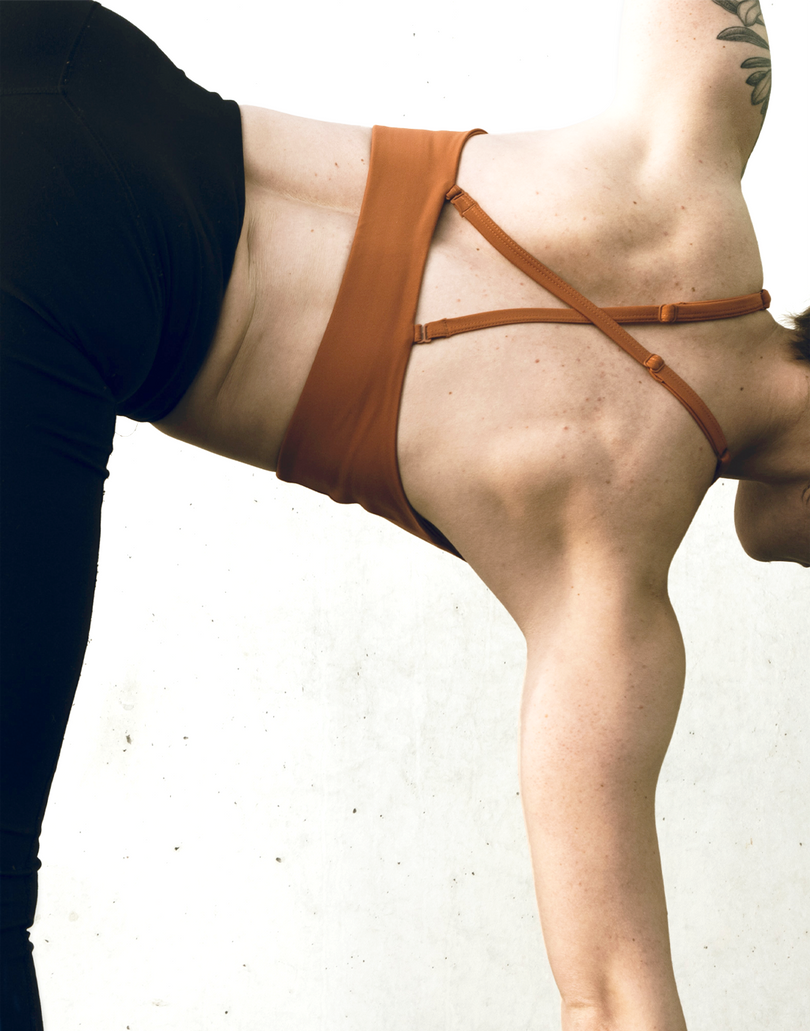Hey, we get it. We all live hectic busy lives. But regardless of how busy you are, it can be extremely beneficial to learn how to practice mindfulness every day daily. In fact the busier you are, the more you need mindfulness. Practicing every day may seem unrealistic at first, especially if you’re thinking of mindfulness as meditating for long periods of time, cross-legged, and looking serene. Although this form of meditation is beneficial for some, mindfulness can look like anything you want. Start by letting go of any ideas of what mindfulness must or should be and learn ways to make it work for you. This article will outline simple ways to incorporate mindfulness into your day, without it taking any extra time.
This article will cover:
- What is mindfulness?
- What are the benefits of daily mindfulness?
- 8 Simple Ways to Practice Mindfulness Everyday
What is mindfulness?
Mindfulness is the basic human practice of being able to be fully cognizant of where we are and what we are doing. It is the ability to not be overly reactive or overwhelmed by what is going on around us. This is something that is always there. Every human already possesses this quality, we just have to learn how to access it. Mindfulness is being aware and awake to the present moment. It is a continuous practice one that you can tap into at any moment of daily life. Mindfulness practices originally come from the 2500-year-old Buddhist tradition. It is generally accepted as a type of meditation in which you focus your being and awareness intensely on what you are sending or feeling in the moment, without interpretation or judgment. It has now become a mainstream part of stress reduction. Mindfulness techniques typically merge meditation practices with other activities. Mindfulness can be paying attention to physical sensations without judgment. It can also be sensory, noticing every sound, taste, odor, and touch sensation in your environment and then leaving your impressions behind. It can be specific activities like breathing methods and guided imagery. It can also be letting your emotions be present but without judgment. Simply be aware and name each emotion you are experiencing and then let them be. People often think about mindfulness in terms of a singular practice. They consider it to be a single session or time when they do a formal meditation exercise. This compartmentalization is often ineffective and doesn’t significantly improve your daily life. For mindfulness to work, it must become an attitude we carry with us throughout our busy days. We should learn to apply our mindfulness skills to all situations throughout the day. To be mindful is to be truly alive, present, and at one with those around you and what you are doing. By listening and noticing, you can bring your mind and body into harmony. It is more than just a practice. Mindfulness is a way of being.
What are the benefits of daily mindfulness?
Practicing mindfulness daily can lead to many beneficial results. By being aware of the present moment and truly listening to your body, you will lead a happier and healthier life. Mindfulness practices most often result in less stress, better performance, and increased awareness. It can help significantly with mental health. Daily mindfulness practice can significantly improve self-esteem and well-being. It can also reduce stress, anxiety, pain, and depression. Improved sleep quality is a major benefit as well. Mindfulness also helps to lower blood pressure and can help with substance abuse issues. It is even shown to aid diabetes control. Developing steady and non-reactive attention is radically different from the auto-pilot way we typically go about the world. When going about our days unconsciously and reactively, we often miss lots of things like sights, connections, jobs, smells, and even opportunities. Practicing mindfulness can open your mind up to new opportunities and can be an opportunity for self-exploration. By focusing on simply the task at hand, mindfulness can also greatly improve concentration and attention. Going about life with a nonjudgement, curious and kind attitude, and paying attention to what is occurring at the present moment, can greatly improve your overall quality of life.
8 Simple Ways to Practice Mindfulness Everyday
Incorporating mindfulness into your everyday life can take time to incorporate it into your routine but don’t give up! Be patient with yourself and start small. If you’re just starting your mindfulness journey, it could be helpful to just pick one of the ideas below to try once a day for a week and add more as you progress. See how it goes!
1. Mindful Wakeup: Start each day with an intention
Starting each morning with setting an intention for the day is a great way to practice mindfulness. Intention means cultivating awareness. Our intention is the underlying motivation for everything we think, say, or do. By setting an intention you can keep your motivation in mind. This practice can help align your conscious thinking with your emotions. Before checking your phone or email, sit up in your bed, close your eyes and connect with the sensations of your body. Take three long deep breaths, breathing in through your nose and out through your mouth. Simply notice the rise and fall of your chest as you breathe. Let yourself settle into a rhythm, not trying to control it. Then ask yourself, what is my intention today? Thinking about the day to come, consider what quality of mind you want to strengthen and develop. Consider what makes you feel connected and fulfilled. Set your intention. For example, an intention can be today I will be kind to others. Or today I will be patient with myself and stay calm. An intention can even be a simple word or mantra-like smile or strength. Your intention can be anything you want it to be, whatever you want to cultivate. Throughout the day, take a breath and return to your intention. The more conscious you are of your intention, the more effective this practice will be. Setting an intention in the morning can greatly help you achieve the things you desire. By focusing your energy and mind on something specific, it will come to be. Intentions also make it more likely that your words, actions, and responses will be mindful and compassionate.
2. Make Mindful Pauses a Pattern: If this, then that
Setting up patterns for when you take mindful pauses throughout the day is another helpful technique. You can follow the framework of “If this, then that.” For example, if the phone rings, take a breath before. Another great one is, if you’re at the front door, then take a deep breath. A great way to incorporate this technique is to think of the unavoidable natural pauses that exist in your life. For example, if you drive to work, if you are stopped at a red light, commit to taking three breaths before it turns green. If you walk to work, this could be when you’re waiting to cross the street. Make the most of these natural pauses by taking mindful breaths, relaxing your neck and shoulders, and paying attention to what it feels like to be in your body at that particular moment. Use your breath in to notice any areas of tension and your breath out to release and relax those areas. Setting up patterns for taking mindful pauses and breaths, can set the tone of the day and reduce overall stress.
3. Mindful Eating: Eat slowly and savor your food
Meals and snacks are often mindless times for many of us when the exact opposite should be true. Incorporating mindfulness into your eating can be an easy way to practice in your busy life. Think of mindful eating as intentional eating. To practice mindful eating, first pause and breathe before eating. Turn off all distractions and focus only on the immediate experience of food. Listen to your body and then look at the food. Notice any physical sensations telling you if you are hungry or not and ask yourself, how hungry am I? Then eat according to your hunger. Savor each bite slowly to get the most out of your food. Pay attention to all of the sensory experiences of eating or drinking. Eat slowly and peacefully. Slow down, take small bites, and breathe deeply as you eat. You can even start with just taking your first three bites mindfully, truly experiencing all the tastes, flavors, and textures. If you don’t enjoy or love it, then don’t eat it. Listen to what your body wants and needs. Sitting down and paying full attention to each bite gives us time to tune into whether our body is hungry or full. This practice can be super helpful in aiding our mind-gut connection since it takes time for the brain to register that the gut is full. Mindful eating can help us reclaim the pleasure of food. It can also aid with weight loss and healthy digestion.
4. Do Less
We live in a super fast-paced culture filled with business, deadlines, achievements, and information. We are used to this “go, go, go!” mentality. We rarely allow ourselves to slow down. But slowing down and doing less can truly help us do more. We need time to breathe, think, and reflect. Physically slowing down helps us mentally slow down and get more pleasure out of life. If you do less, then you can do each thing more slowly, completely, and with more concentration. Figure out what’s important and let go of what's not. An easy way to practice this is to say “no” more. This will allow you to focus on the things you do decide to do and offer them the attention you want to give. Another way to practice doing less is to spend at least five minutes a day doing nothing. Simply exist in silence and become aware of your thoughts. We don’t have to be doing anything all the time. Taking five minutes of nothing time to just be, can be super beneficial to your life.
5. One thing at a time
It is a myth that multitasking makes us more productive. It makes us more prone to mistakes, less productive, and more exhausted mentally and physically. Too many tasks mean you’ll be rushing from one thing to the next without stopping to think about what you are doing. Focusing on just one task at a time is much more effective and efficient than multitasking. You will be able to get more done in the long run if you just do one thing at a time. Take on each task with full awareness and focus. For example when you’re eating, just eat, or when you’re cooking, just cook. This can help us be more present in the current moment. It is also more efficient and you will be able to finish your tasks without feeling worn out or tense.
6. Transform your Chores
Turning ordinary household tasks into mindfulness spaces can be a great way to incorporate mindfulness. Household tasks take up a decent portion of our lives. Whether you are preparing dinner, doing laundry, or washing dishes, focus all your awareness on the task at hand in the present moment. Think of it less as a boring chore and more as a mindfulness practice. Fully engage with what you are doing. Try to not get caught up in your mind or rush to finish. Notice the textures, colors, and smells. Make each movement mindful. For example, if you're sleeping, pay attention to the movement of your arms, how your body feels performing the motion, and the sound of the brush on the floor. Transforming your chores can help keep you in tune with the moment, yourself, your space, and the world around you. This practice will turn every little act into a sacred ritual.
7. Mindful Listening
When we are talking to others, we are often there in body but not fully present in our minds. More often than not, we aren’t focusing on listening to them and are instead caught up in the chatter of our minds. We judge what they are saying mentally or think about what to say next. Instead, we can use our time with others as an exercise in mindfulness. Don’t just hear their words, really listen to what they’re saying. Try to focus all your attention on the other person. This can be super helpful in workplace meetings. Try to pay attention to what your coworkers are saying in a meeting without any judgment or commentary about the quality of it or what it means. Just listen and hear without thinking too much about it. You will hear and notice so much more. Listening can be an act of love and kindness. People appreciate it deeply and they’ll even listen to you more when you speak.
8. Mindful Walking
A simple way how to practice mindfulness is through mindful walking. To do this, simply pay attention to the act of walking itself. This can be when you are walking somewhere throughout the day or a dedicated time for a mindful walk. Try walking at about 50% slower than you typically do. Tune into how it feels to walk slow. Notice the feeling of the ground beneath you. Use all of your senses to bring awareness to your body and surroundings. Concentrate on the physical sensations of walking, noticing the sights, sounds, and feelings of each step. Be aware of the different sensations that occur when your heels and toes touch the ground. Try to stay in the present moment. Focus on repeated “left, right” as you walk to prevent your mind from wandering. You can even look at your feet to become more aware of your actions. Always focus on your breathing. Mindful walking is a great technique that can provide a calmer state of mind.
Sources:
https://www.thehealthy.com/mental-health/mindfulness-tips/
https://www.mindful.org/what-is-mindfulness/
https://www.takingcharge.csh.umn.edu/what-mindfulness
https://www.mindful.org/take-a-mindful-moment-5-simple-practices-for-daily-life/
https://mrsmindfulness.com/11-ways-to-bring-more-mindfulness-into-your-life-today/










